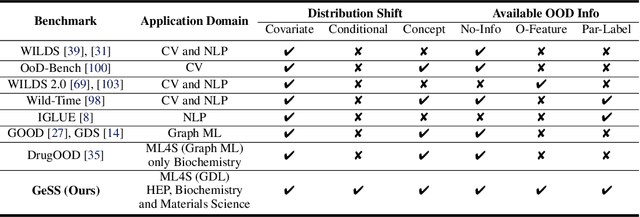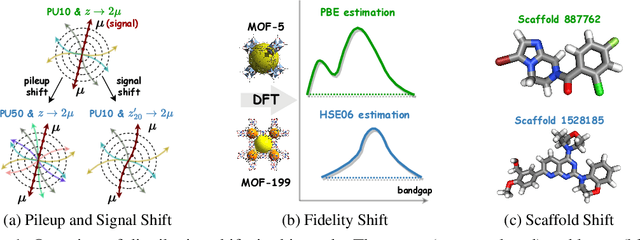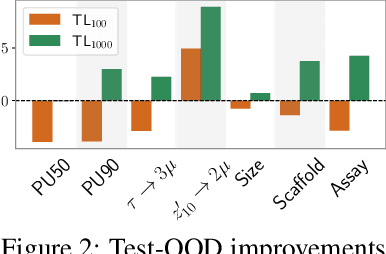Deyu Zou
Pairwise Alignment Improves Graph Domain Adaptation
Mar 02, 2024



Abstract:Graph-based methods, pivotal for label inference over interconnected objects in many real-world applications, often encounter generalization challenges, if the graph used for model training differs significantly from the graph used for testing. This work delves into Graph Domain Adaptation (GDA) to address the unique complexities of distribution shifts over graph data, where interconnected data points experience shifts in features, labels, and in particular, connecting patterns. We propose a novel, theoretically principled method, Pairwise Alignment (Pair-Align) to counter graph structure shift by mitigating conditional structure shift (CSS) and label shift (LS). Pair-Align uses edge weights to recalibrate the influence among neighboring nodes to handle CSS and adjusts the classification loss with label weights to handle LS. Our method demonstrates superior performance in real-world applications, including node classification with region shift in social networks, and the pileup mitigation task in particle colliding experiments. For the first application, we also curate the largest dataset by far for GDA studies. Our method shows strong performance in synthetic and other existing benchmark datasets.
GDL-DS: A Benchmark for Geometric Deep Learning under Distribution Shifts
Oct 12, 2023



Abstract:Geometric deep learning (GDL) has gained significant attention in various scientific fields, chiefly for its proficiency in modeling data with intricate geometric structures. Yet, very few works have delved into its capability of tackling the distribution shift problem, a prevalent challenge in many relevant applications. To bridge this gap, we propose GDL-DS, a comprehensive benchmark designed for evaluating the performance of GDL models in scenarios with distribution shifts. Our evaluation datasets cover diverse scientific domains from particle physics and materials science to biochemistry, and encapsulate a broad spectrum of distribution shifts including conditional, covariate, and concept shifts. Furthermore, we study three levels of information access from the out-of-distribution (OOD) testing data, including no OOD information, only OOD features without labels, and OOD features with a few labels. Overall, our benchmark results in 30 different experiment settings, and evaluates 3 GDL backbones and 11 learning algorithms in each setting. A thorough analysis of the evaluation results is provided, poised to illuminate insights for DGL researchers and domain practitioners who are to use DGL in their applications.
 Add to Chrome
Add to Chrome Add to Firefox
Add to Firefox Add to Edge
Add to Edge